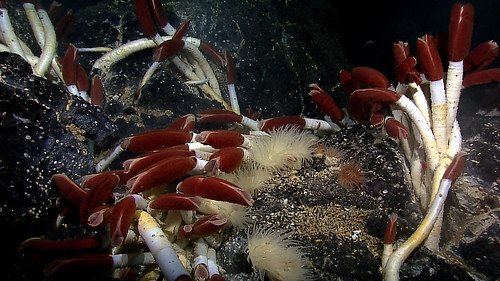經過4天在紐約聯合國總部的密集討論,世界各國政府代表24日達成共識,同意開始談判史上第一個超越國家管轄範圍、保護國際公海和海床海洋生物的條約,總面積約為地球的一半。
公海生物多樣性議題 將交聯合國大會
第九屆「國家管轄外生物多樣性工作小組」(Ad Hoc Open-ended Informal Working Group on Biological Diversity Beyond Areas of National Jurisdiction)是過去9個月來聯合國大會所召集的第三次,也是最後一次會議。
200多名與會成員中,包括國家代表、跨政府組織和非政府組織,依聯合國海洋法公約(UNCLOS),探討公海生物多樣性(biodiversity in areas beyond national jurisdiction,BBNJ)保育與永續利用條約的範疇、參數和可行性。
今年9月登場的聯合國大會,將探討依聯合國海洋法公約制定新條約的相關議題。依照2012年聯合國永續發展會議(Rio+20),國家管轄外生物多樣性工作小組會議需提供建議給本年度聯合國大會,而聯合國大會也必須採納國家管轄外生物多樣性工作小組會議的結論。
利益共享為核心 全球性海洋保護系統將誕生
國家管轄外區域生物多樣性的保育和永續利用日漸受到國際關注;海底山周圍、海底火山噴發口和冷水珊瑚礁等地區生物多樣性豐富,但很容易受到捕魚和生物探勘等人類活動影響。
儘管新條約的必要性受到少部分政府代表的質疑,依科學證據需快速落實的協議進程,也因此趨緩,然而,與會各國皆同意需有所作為。
「雖然最終結果仍有不確定性,各界仍對新條約保有希望。新條約可望有助形成全球海洋保護區系統,讓生物多樣性保育納入公海漁業、船運和海床開採的治理,並讓海洋基因資源能被更有效率地取得。新條約也可能促進重要科學和商業探索,同時確保利益的共享。」世界自然保育聯盟資深公海顧問Kristina Gjerde說。
雖然許多保育人士對於政府間研討會日期尚未確定感到失望,會議仍成功跨出談判第一步,針對BBJN保育與永續利用發展具法律約束力的協議,也是首次達成共識。
為了確保公海漁業國的權益,會議結論同意,新條約不可影響現行協議或相關國際實體的工作。
不過根據地球談判公報,美國與會代表指出,仍有許多困難的問題尚未有答案,包括魚是否算是海洋基因資源?在BBJN的供應鏈上,誰必須分享利益?是最終使用者、使用者所屬國家、銷售者、還是銷售者的國家?而此利益該與誰共享,又如何傳遞等。
Government representatives from around the world agreed Saturday to develop the first legally-binding agreement to conserve marine life in the high seas and international seabed, an area covering roughly half the planet.
After four days of intense deliberations at UN Headquarters in New York, delegates reached consensus to begin negotiating a UN treaty that addresses the protection of marine life in areas beyond national jurisdiction – the global ocean commons.
The ninth meeting of the Ad Hoc Open-ended Informal Working Group on Biological Diversity Beyond Areas of National Jurisdiction was attended by some 200 participants, including national delegations, intergovernmental organizations and nongovernmental organizations.
The meeting was the last of three convened by the UN General Assembly over the past nine months to discuss the scope, parameters and feasibility of a possible new international instrument on the conservation and sustainable use of marine biodiversity in areas beyond national jurisdiction, BBNJ, under the UN Convention on the Law of the Sea, or UNCLOS.
The meeting produced recommendations for a decision to be taken during the current session of the UN General Assembly on the development of a new treaty under UNCLOS, as mandated by the 2012 UN Conference on Sustainable Development, informally called Rio+20.
The conservation and sustainable use of biodiversity in areas beyond national jurisdiction is attracting increased international attention. Areas around seamounts, hydrothermal vents and cold-water coral reefs are rich in biodiversity but vulnerable to damage by human activities such as fishing and bioprospecting.
At the meeting progress came despite pressure from a small group of governments that questioned the need for a new legal framework. That minority blocked agreement on a faster timeline reflecting the clear scientific imperative for action, but all countries agreed on the need to act.
As an assurance to high seas fishing states, it was agreed that any new treaty would not undermine existing agreements or the work of relevant international bodies.
The outcome of the meeting must now be adopted by the UN General Assembly by September 2015, during the current session.
“Though the final results remain uncertain, many have high hopes for the new treaty,” says Kristina Gjerde, senior high seas advisor iwth the International Union for the Conservation of Nature.
“It could help secure the designation of a truly global system of marine protected areas, mainstream biodiversity conservation into the governance of high seas fisheries, shipping and seabed mining, and provide for more effective access to marine genetic resources,” Gjerde said. “The treaty could also also foster important new scientific and commercial discoveries while ensuring the benefits are shared by all.”
Although many conservationists were disappointed that the recommendation did not designate a date for convening of an intergovernmental conference, the meeting did succeed in charting the way forward for negotiations and, for the first time, reaching consensus on the legally-binding nature of a future agreement on the conservation and sustainable use of BBNJ.
As reported by the Earth Negotiations Bulletin, the U.S. delegation pointed out that difficult questions remain unanswered: could a fish be considered a marine genetic resource? Who in the very long chain from basic research to product sales would be required to share benefits: the end user, the state of the end user, the seller, the state of the seller? And to whom would any benefits go and on what basis would they be distributed?
※ 全文及圖片詳見:ENS






